
 |
Eager Space | Videos | All Video Text | Support | Community | About |
|---|

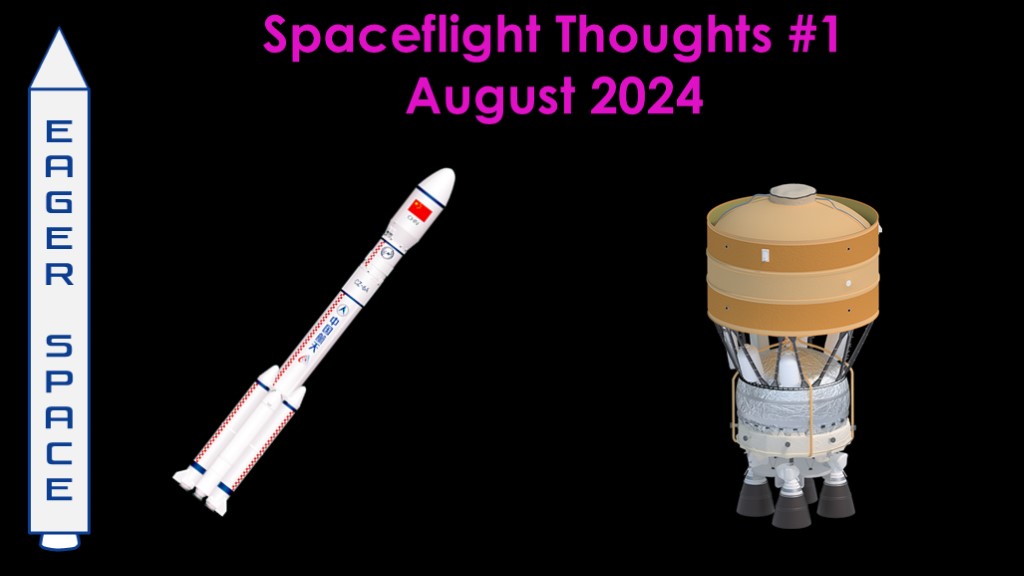
SpaceNews Article: https://spacenews.com/chinese-rocket-stage-breaks-up-into-cloud-of-more-than-700-pieces-of-space-debris/
NASA OIG Report: https://oig.nasa.gov/wp-content/uploads/2024/08/ig-24-015.pdf
Everyday Astronaut tour of New Glenn Factory: https://www.youtube.com/watch?v=rsuqSn7ifpU&pp=ygUSZXZlcnlkYXkgYXN0cm9uYXV0
Pathfinder episode with Andy Lapsa (Stoke Space): https://pod.payloadspace.com/episodes/0104
Main Engine Cut Off podcast: https://mainenginecutoff.com/
Off Nominal Podcast: https://offnom.com/
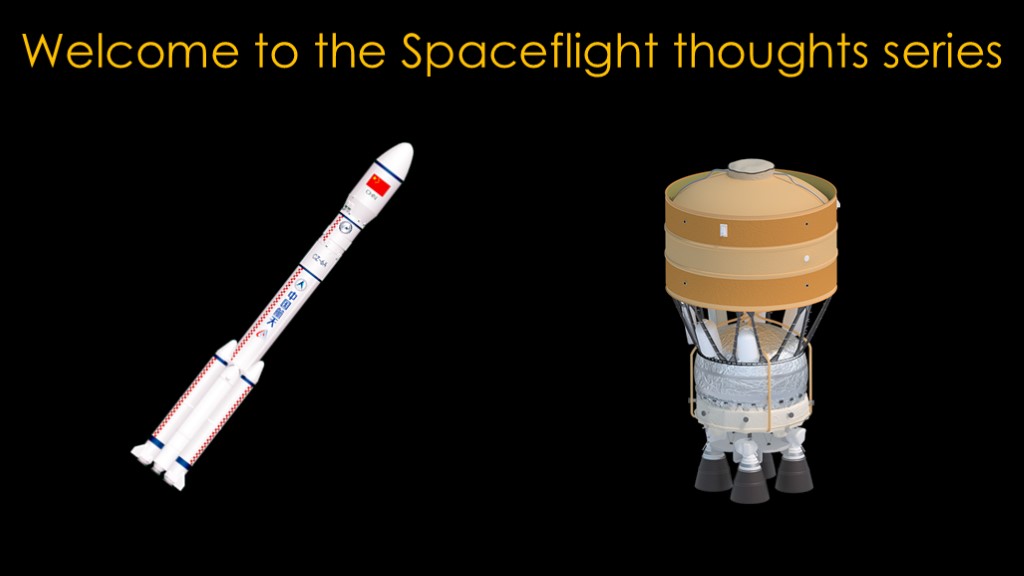
I often come across topics that I want to comment on but which aren't really big enough for a full video, so this is the start of a series of shorter-form videos.
I'll put any links in the video description.
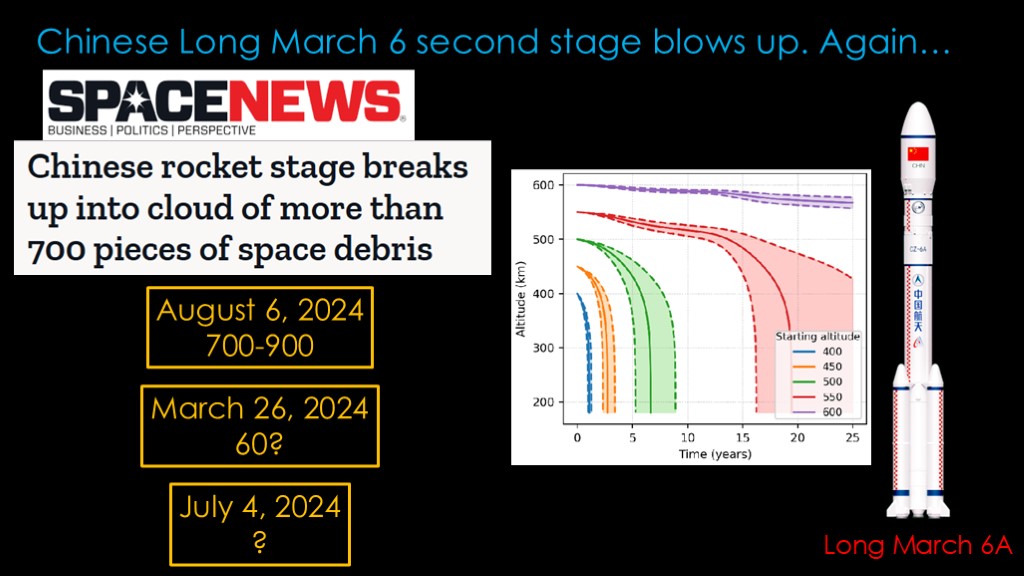
On of the members of the EagerSpace subreddit asked about this one.
On August 6, China launched their long march 6A rocket, and after releasing its satellites into an 800 kilometer polar orbit, something happened to the second stage and there was a "debris creation event" that resulted in 700 to 900 individually tracked objects.
That followed a similar event on March 26 which created at least 60 objects, and one on July 4th that created an unknown number of objects.
This latest one was particularly troubling as the debris is in an 800 kilometer sun synchronous polar orbit, and it can take centuries for debris to decay from those altitudes.
The question is "Will China Fix the long march 6A?"
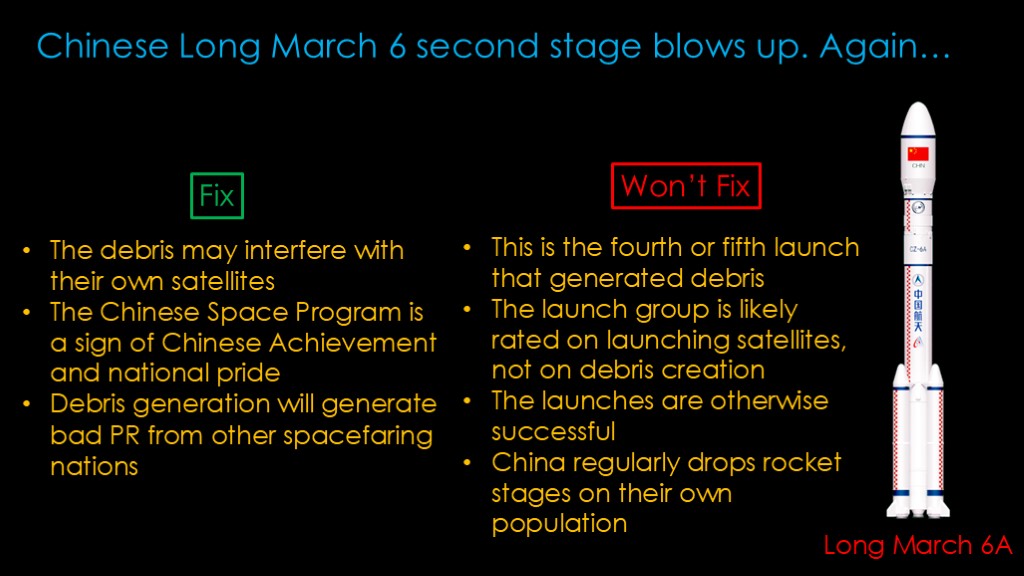
That is an interesting question, and one that I don't have a real answer for.
I can talk about the factors that might push it one way or the other.
Starting on the "Won't Fix" side,
This is the fourth or fifth launch of the long march 6 that generated debris, and one of them was a couple of years ago, so it's not a new issue.
The group launching the rocket is likely rated on delivering satellites to orbit, not on whether they create debris or not. They may have a strong incentive to keep flying.
The launches are otherwise successful.
China regularly drops rocket stages on their own population. Being a good citizen doesn't seem to be the their highest priority.
On the "Fix" side, the debris that they generate may interfere with their own satellites.
The Chinese space program is a sign of Chinese achievement and a source of national pride.
Debris generation will generate bad PR and pushback from other spacefaring nations.
I'm hoping they'll end up on "fix" because 800 km is crowded and a really bad place to create debris, but you may have heard that hope is not a strategy.
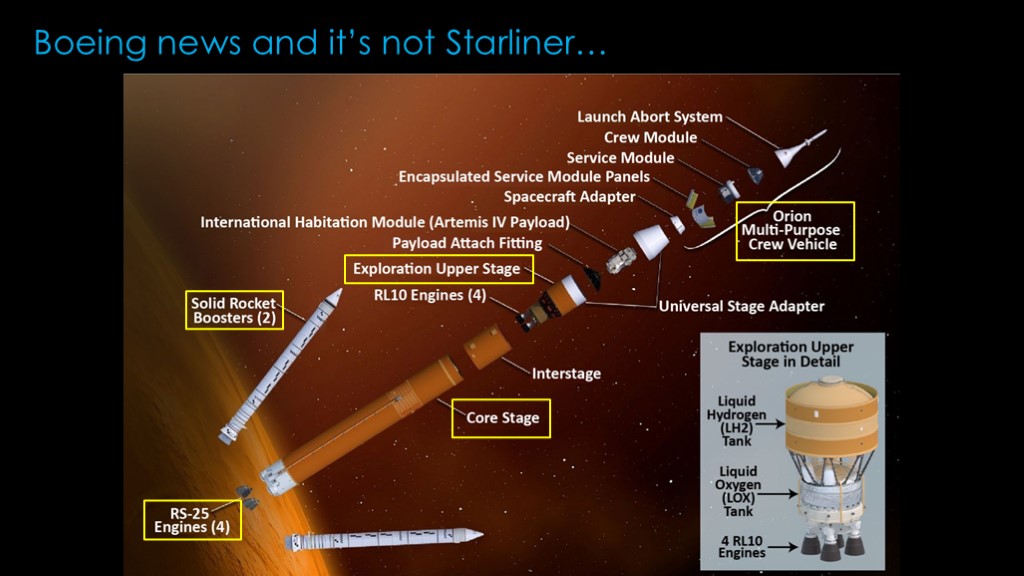
Boeing news and it's not starliner.
When NASA started on SLS in 2010, Congress gave them a target to fly in 2016 (later revised to 2017). That short timeline would be a problem for NASA.
The core stage was supposed to be a modified version of the shuttle external tank, the RS-25 engines were shuttle leftovers, the Solid Rocket boosters were pulled directly from the constellation program and the Orion capsule was already in development. Those all looked achievable, but building a new second stage - known as the exploration upper stage - didn't fit into the schedule.
NASA therefore decided to look for an alternate second stage.
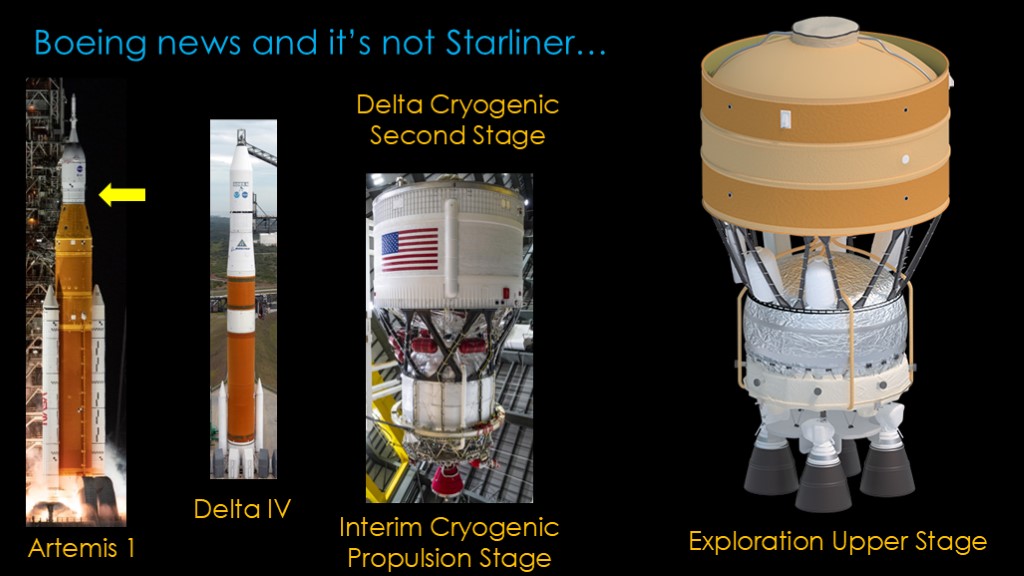
NASA looked around, and settled on the upper stage of the delta IV rocket, known as the Delta Cryogenic Second Stage.
ULA agreed to produce some modified versions of this stage, and the NASA version is known as the Interim Cryogenic Propulsion System, and that is what flew on Artemis 1.
This stage was a good fit for the Delta IV Medium rocket, but it is a comically small stage for SLS, with only a single RL-10 engine providing 11 tons of thrust, and that upper stage limits the payload to the moon to only 27 tons.
It was, however, the quickest path to get SLS flying, and ULA had no problem producing the stages, which were assigned to fly Artemis 1 through 3. This configuration of SLS is known as block 1.
The Exploration upper stage uses - "will use" is more correct at this point - four RL-10 engines and over 4 times the propellant. It is a decent match for the size of SLS and will boost the lunar payload up to 38 tons.
The exploration upper stage is being developed by Boeing. When congress told NASA to build SLS, they told them to reuse as many contracts as possible, so the Boeing upper stage contract for the Ares I rocket that was part of the constellation program got modified to encompass the core stage of SLS and then was modified again to include the exploration upper stage. If you suspect that makes it hard to tell what each of them cost, you would be right.
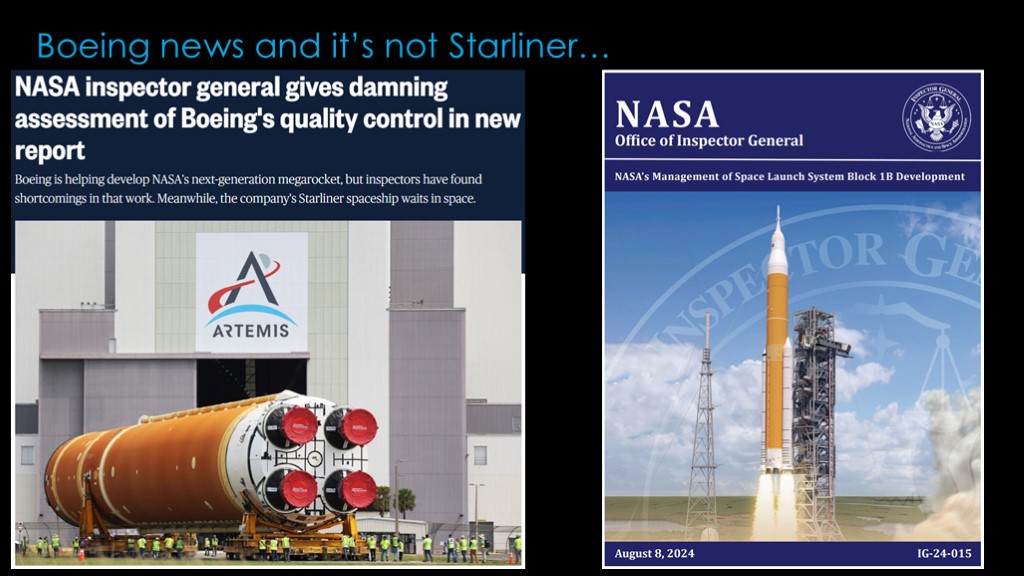
On August 8th of 2024, the NASA inspector general released a report on SLS Block 1B, which is the version of SLS that will include the second stage.
And no, I don't know why NBC news thought showing the core stage while talking about the second stage was a good move.
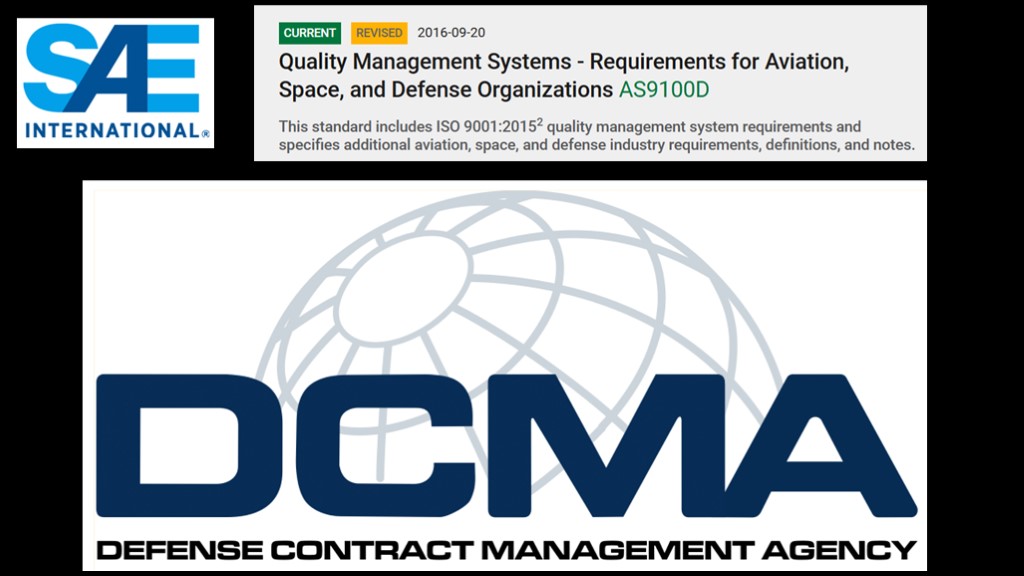
NASA requires all contractors to have a quality assurance program that complies with the quality management standard known as AS9100. This is a very common standard and is used by tens of thousands of companies worldwide. At NASA the front-line quality assurance verification is done by the defense contract management agency.
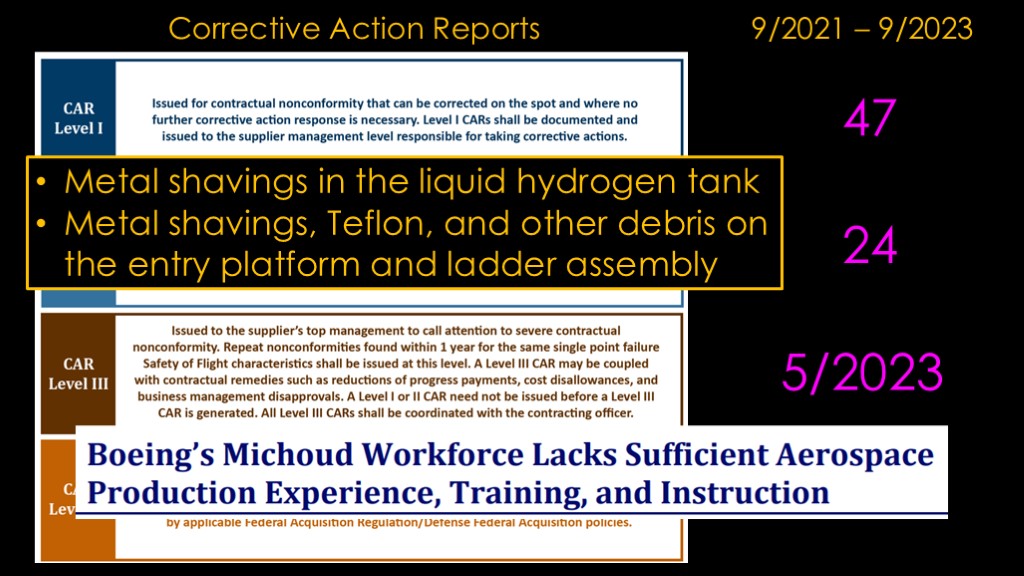
If problems are found, DCMA issues corrective action reports.
For this report, NASA OIG analyzed the corrective action reports for the exploration upper stage project for two years, from September 2021 to September 2023.
They found there were 47 level one reports, which are problems that can be corrected on the spot.
They also found 24 level two reports, which are problems that need to be addressed by supplier management.
In one instance, metal shavings were found in the liquid hydrogen tank, and metal shavings, Teflon, and other debris were found on the ladders used to access the tank.
That is really, really bad. Foreign material in tanks will get into motors and cooling channels and can cause serious issues.
It was bad enough that in may of 2023, NASA's chief safety officer for the stages project asked DCMA to draft a level III report that would deal not only with the corrective action reports but the way Boeing dealt with them. Level III reports are a significant big deal. This report was never sent to Boeing.
OIG's conclusion is that Boeing's workforce at Michoud assembly facility in New Orleans lacks sufficient experience, training, and instruction.
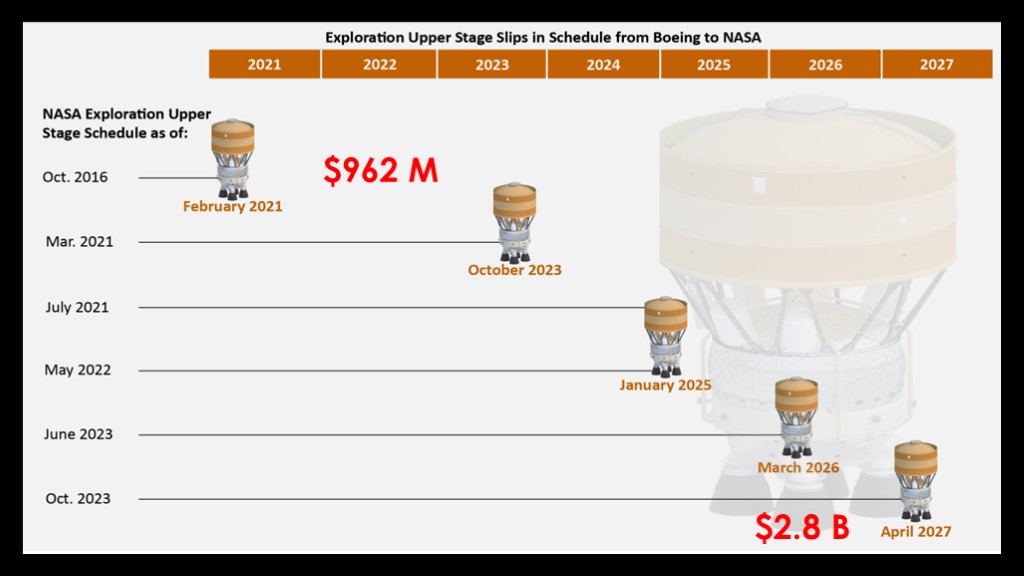
The other news is what we have unfortunately come to expect from the SLS program...
EUS has had lots of slips, moving from February of 2021 all the way out to April of 2027 in recent estimates. About a year of this is attributable to Boeing running out of funds for the SLS core stage and shifting funds from EUS to the core stage.
In 2017, the estimated costs were $962 million, and the current estimate is that the costs will reach $2.8 billion through 2028.
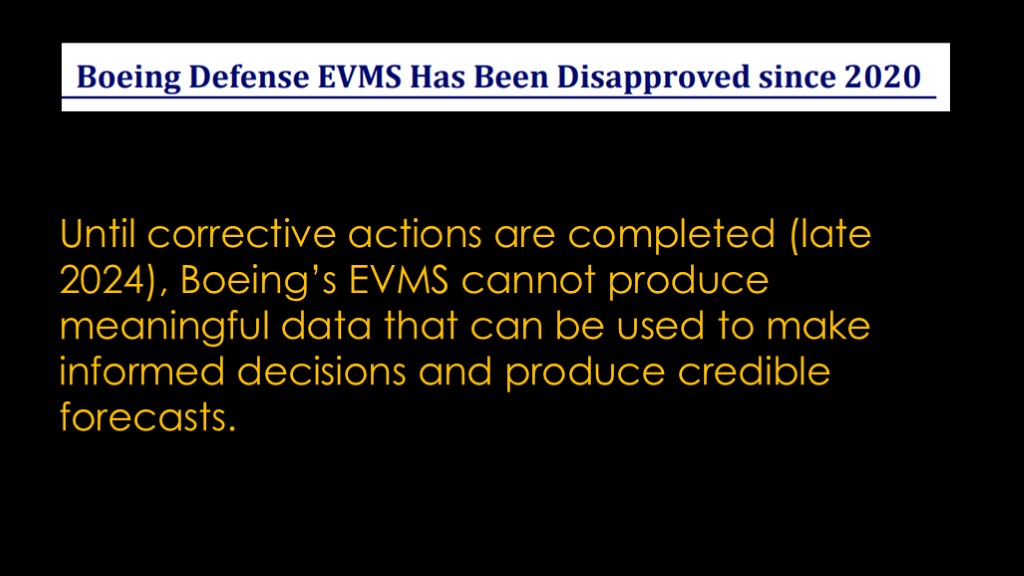
It may be worse than that. Boeing's earned value management system - the system that Boeing uses to predict schedule, costs, and perform project tracking - is not approved by the Department of Defense. It currently has open level II and level III CARS issues.
Until that system is fixed, it cannot be used to produce meaningful data that can be used to make informed decisions and produce forecasts.
NASA simply *does not know* how long the exploration upper stage will take to finish nor how much more it will cost. Maybe the projections are fine, maybe they aren't. This system is scheduled to be fixed later in 2024.
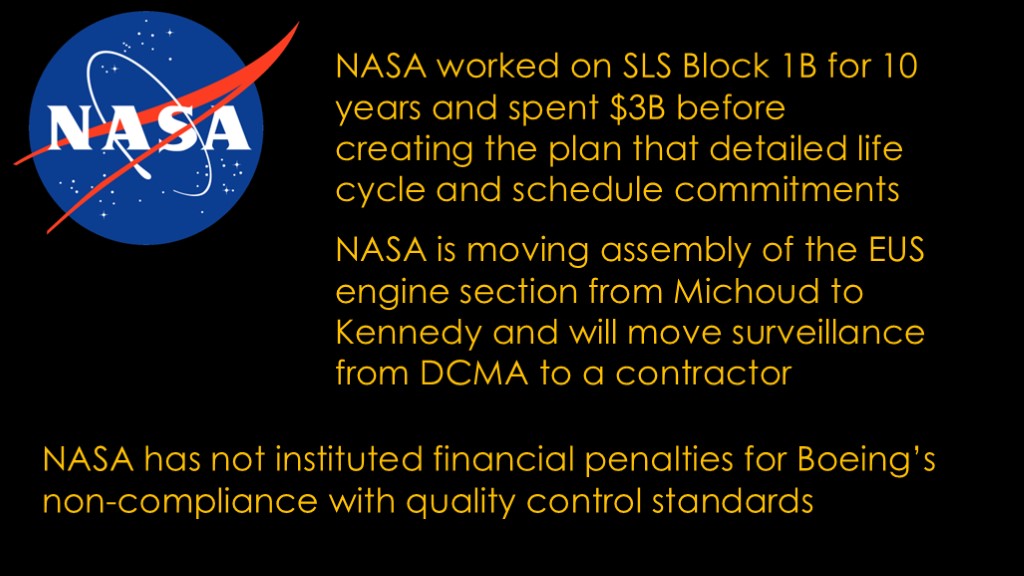
It's a lot of fun to kick Boeing while they are down and they are certainly a big part of the problem, but NASA is clearly not helping.
NASA worked on SLS Block 1B for 10 year and spent $3 billion before creating the plan that detailed life cycle and schedule commitments, violating NASA scheduling requirements.
NASA is moving assembly of the exploration upper stage engine section from Michoud to Kennedy and will move quality control surveillance from DCMA to an outside contractor. That seems unlikely to produce the level of oversight required by the program.
NASA has not instituted financial penalties for Boeing's non-compliance with quality control standards.
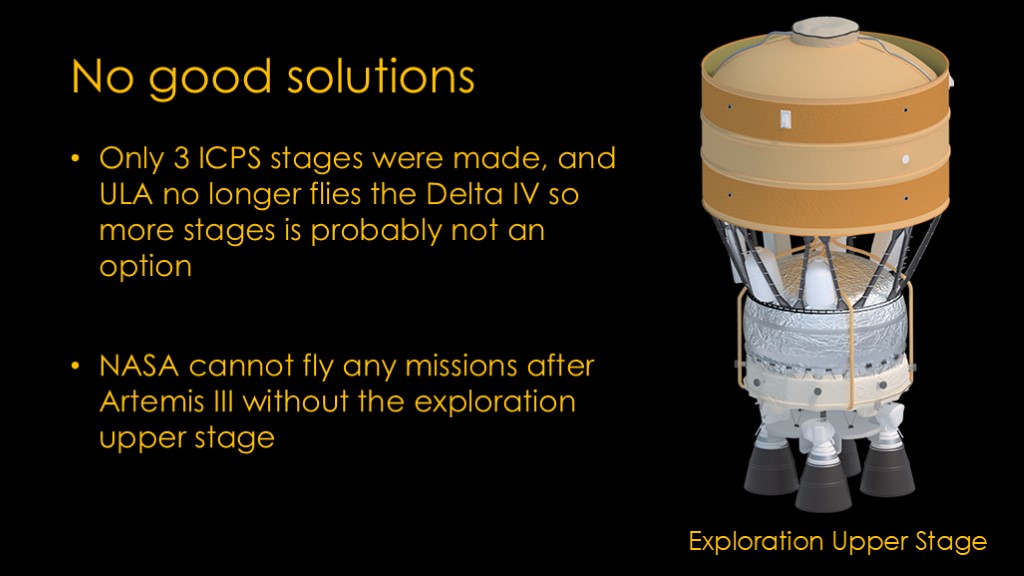
There are no good solutions to this situation. NASA only ordered three ICPS stages and ULA no longer flies the Delta IV so it's probably not possible to buy new ones.
NASA therefore cannot fly any missions after artemis III without the exploration upper stage.
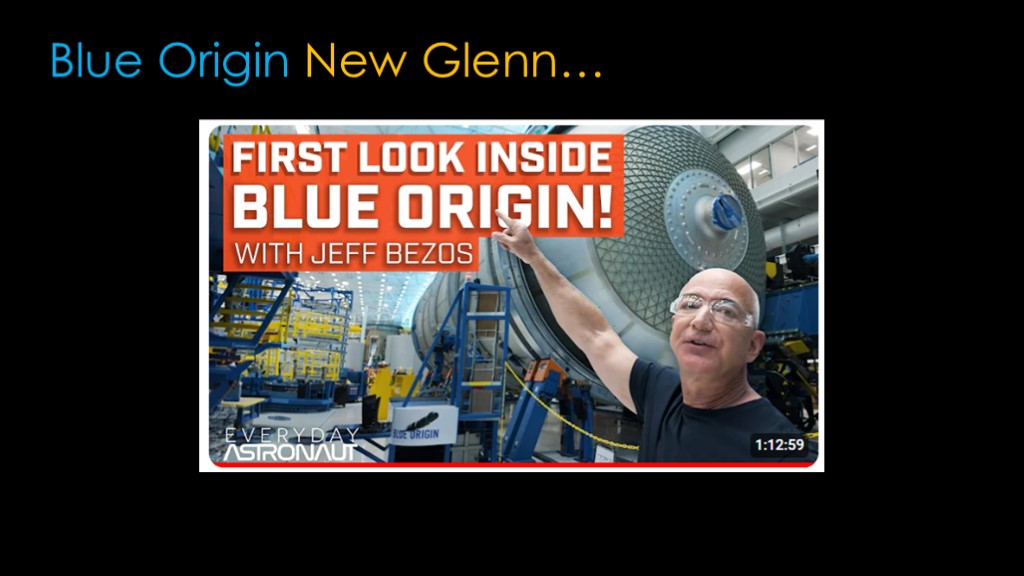
In case you weren't one of the nearly 1 million people who watched it, Tim Dodd's tour of the Blue Origin New Glenn factory is worth your time.
I'm always happy to see real hardware and more rockets is generally better - I will be much happier with a company spending billions of dollars and flying a rocket over one spending billions of dollars and not flying.
I still have open questions about New Glenn...
How are they going to go from their current status to launching the Escapade mission to Mars in 40 days? They've never launched this rocket or any orbital rocket nor have we seen flight hardware on the pad yet. Will be impressive if they can do it.
I'm skeptical about whether as a company with a big new orbital rocket they can compete in terms of cost with Falcon 9, Vulcan, or Neutron.
The next couple of months will be interesting.

I also had somebody recommend the Pathfinder podcast interview with Andy Lapsa from Stoke Space, and that is also well worth your time. That did move the needle on my opinion on Stoke a little - Lapsa clearly thinks more like a founder than I had previously thought, but I still am skeptical about whether their approach will work and whether they have enough money - or can raise enough money - to reach their goal.
Stoke has also decided to take the software that they built to manage their hardware design and manufacturing needs - software that they call "Fusion" - and commercialize it. Given that I have worked on teams that built internal tools and teams that sold commercial software, I believe I have a bit of expertise.
What Lapsa said made perfect sense to me. Good internal software is expensive to develop and because it is a cost center - you put money into it - it typically only gets to the "tolerable" state before somebody gets tired of paying for it. And it's hard to manage the team - you might only need minimal support for 6 months but then need a lot of support for 3 months to deal with a new situation.
If what you are doing is needed by others in the industry - and I no reason to doubt that - then it will cost you more to create the commercial product, but it will quickly turn from a cost center that you pay for to a profit center that generates money for the company, and some of the requests that your outside customers make will turn out to improve your own use of the software.
You do run the risk of improving your competitor's products, but stoke seems to operate on the same "try to keep up with us" philosophy that has worked well for SpaceX and Rocket Lab.
A bit of trivia - the custom system that SpaceX wrote to do this is called "warpdrive"...
And that's all my thoughts for now...
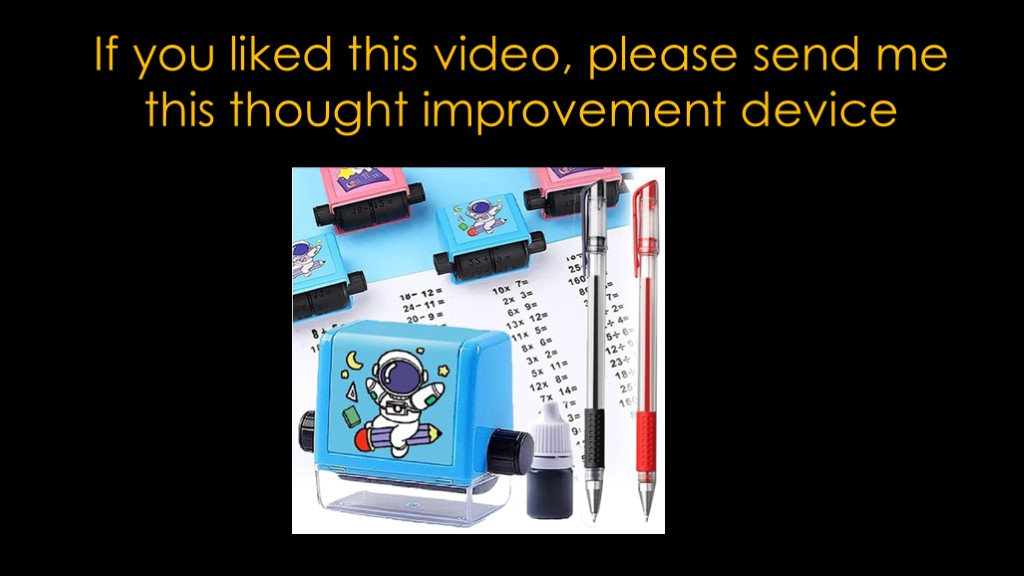
If you liked this video, please send me this thought improvement device, as used by astronauts to improve their concentration during space walks.